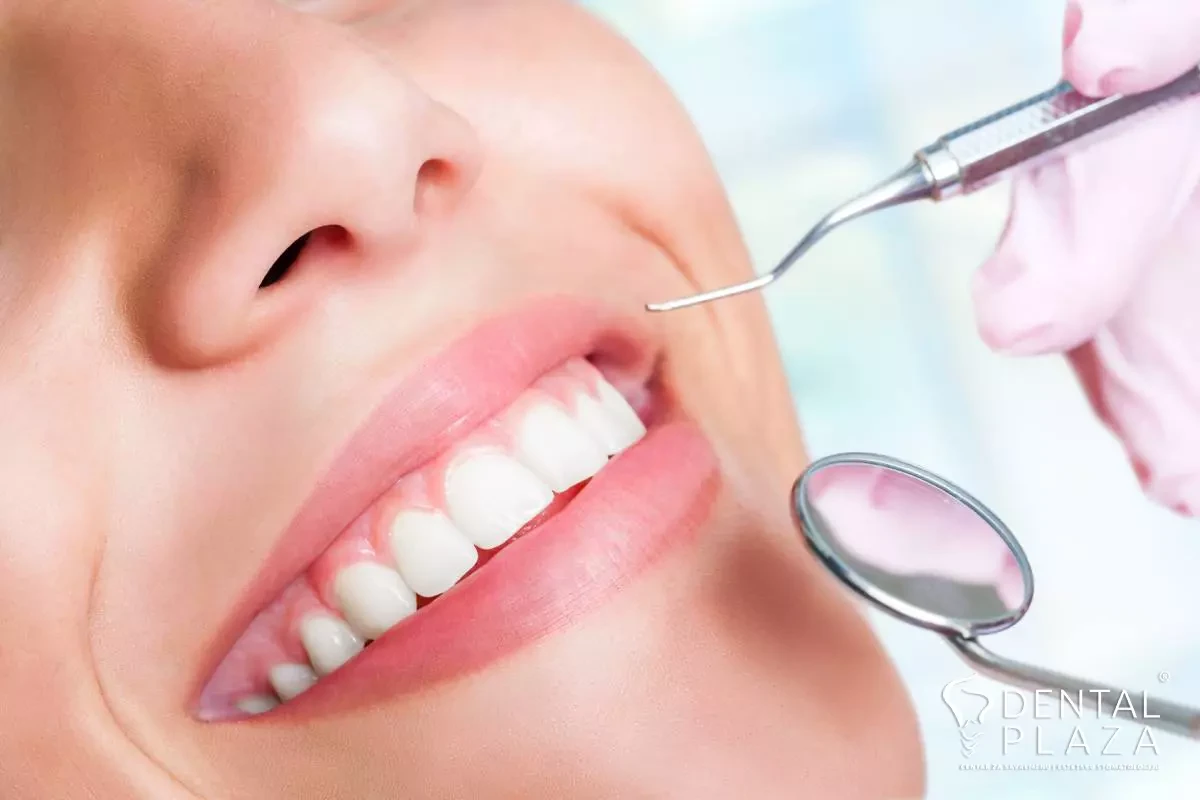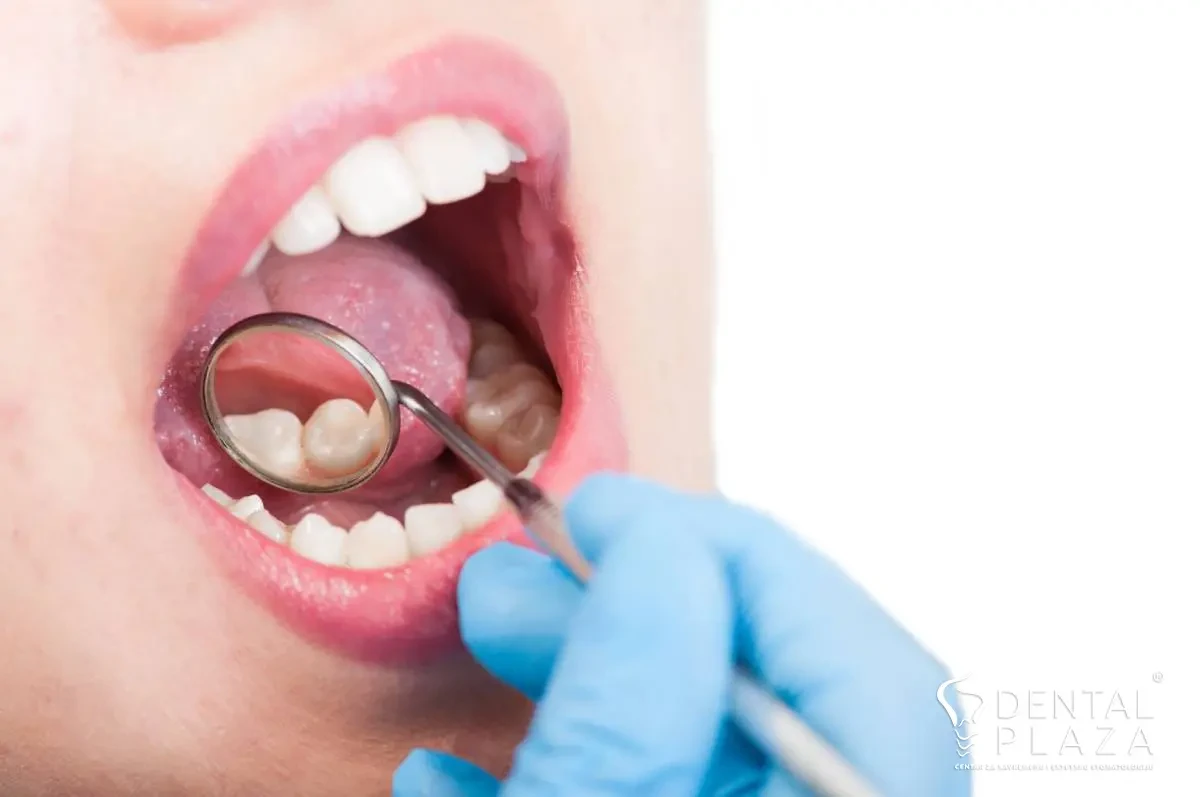Do not be shy, show your teeth!
Call Center 08-21h
Do not be shy, show your teeth!
Call Center 08-21h

Periodontopathy is a progressive, degenerative disease of the periodontium (the supporting apparatus of the tooth) which, as a function of time, can lead to clenching, shifting and loss of tooth. In addition to caries, it is the most common disease of the dento-facial region. If it progresses, it can lead to deep destruction of periodontal tissue, which ends in tooth loss. It can occur at all ages, from early childhood (aggressive periodontitis), to the appearance in middle and mature years (chronic periodontitis), which is much more common.
Chronic periodontitis develops slowly and gradually, and can be asymptomatic for a very long time, so patients usually contact the dentist when it is already in an advanced stage.
Periodontal pockets are pathologically formed spaces between teeth and bone walls. They are located below the level of the gums. They occur when the inflammatory process on the gums, most often caused by dental plaque bacteria, progresses and when it is transmitted to the bone. This creates bone defects and forms spaces called periodontal pockets.
There are two basic ways to detect periodontal pockets:
By probing - the dentist enters the periodontal pocket space with the help of a periodontal probe and measures its depth. The probe contains incised measurements in millimeters and ball at the top, in order not to damage the tissue.
By radiography - X-rays are used to determine the stage of periodontitis. In this way it is possible to monitor the condition of the bone around the tooth affected by this condition. This is very important, because it also depends on the density and level of the bone when the tooth will finally loosen and fall out. In these images, the dentist can determine the existence of periodontal pockets, as well as the direction of bone loss, which can affect the prognosis and the treatment plan.

Periodontitis is a chronic disease that progresses slowly and does not give a strong and noticeable clinical picture, which is the biggest problem. Patients do not feel any problems for a long time, while the disease progresses greatly. Initially, the main signs of periodontitis are swelling, redness and inflammation of the gums, bleeding gums, bare neck of the teeth. You will easily notice inflamed gums if you notice bleeding after brushing your teeth or see that your gums have become red and swollen. If the disease persists, over time the gums can become painful to the touch or spontaneously. In the terminal phase of the disease, the teeth loosen and their position changes.
If you notice any of these symptoms, be sure to call your dentist.
In the initial stages of the disease, the so-called causal phase of periodontitis is applied. This removes hard and soft deposits around the teeth, ie. removes dental plaque bacteria that are the main cause of the disease. Ultrasound removal of hard dental plaque (calculus) is performed in the dental office. Appropriate extensions and mild ultrasonic vibrations eliminate hard dental plaque and then, by use of brush and abrasive pastes, we eliminate soft deposits above the level of the gums. Existing periodontal pockets below the level of the gums are processed with special treatment. Periodontal pocket treatment involves cleaning the concrements and deposits below the level of the gums. This intervention is mainly performed under local anesthesia, because it can be painful.
The goal of therapy is to remove the altered tissue (tissue affected by inflammation) through the opening of the periodontal pocket, if possible. During processing, subgingival concrements are mechanically removed, ie. deposits below the level of the gums, but also a thin surface layer of tooth cementum that is affected by the infection. In addition to mechanical treatment, the periodontal pocket is rinsed at the same time, which helps the cleaning process.
Some periodontal pockets may be anatomically inaccessible, or so deep that they cannot be completely repaired in this way. If this access to the periodontal pocket is not possible, it is necessary to perform a surgical procedure that allows this access - lobe surgery. In this way, under the action of local anesthesia, the surgeon directly approaches the periodontal pocket and cleans it under the direct control of the eye. The formed lobe is then returned to the starting position and adapted with surgical sutures.

Do you have questions?

Periodontopathy is a progressive, degenerative disease of the periodontium (the supporting apparatus of the tooth) which, as a function of time, can lead to clenching, shifting and loss of tooth. In addition to caries, it is the most common disease of the dento-facial region. If it progresses, it can lead to deep destruction of periodontal tissue, which ends in tooth loss. It can occur at all ages, from early childhood (aggressive periodontitis), to the appearance in middle and mature years (chronic periodontitis), which is much more common.
Chronic periodontitis develops slowly and gradually, and can be asymptomatic for a very long time, so patients usually contact the dentist when it is already in an advanced stage.
Periodontal pockets are pathologically formed spaces between teeth and bone walls. They are located below the level of the gums. They occur when the inflammatory process on the gums, most often caused by dental plaque bacteria, progresses and when it is transmitted to the bone. This creates bone defects and forms spaces called periodontal pockets.
There are two basic ways to detect periodontal pockets:
By probing - the dentist enters the periodontal pocket space with the help of a periodontal probe and measures its depth. The probe contains incised measurements in millimeters and ball at the top, in order not to damage the tissue.
By radiography - X-rays are used to determine the stage of periodontitis. In this way it is possible to monitor the condition of the bone around the tooth affected by this condition. This is very important, because it also depends on the density and level of the bone when the tooth will finally loosen and fall out. In these images, the dentist can determine the existence of periodontal pockets, as well as the direction of bone loss, which can affect the prognosis and the treatment plan.

Periodontitis is a chronic disease that progresses slowly and does not give a strong and noticeable clinical picture, which is the biggest problem. Patients do not feel any problems for a long time, while the disease progresses greatly. Initially, the main signs of periodontitis are swelling, redness and inflammation of the gums, bleeding gums, bare neck of the teeth. You will easily notice inflamed gums if you notice bleeding after brushing your teeth or see that your gums have become red and swollen. If the disease persists, over time the gums can become painful to the touch or spontaneously. In the terminal phase of the disease, the teeth loosen and their position changes.
If you notice any of these symptoms, be sure to call your dentist.
In the initial stages of the disease, the so-called causal phase of periodontitis is applied. This removes hard and soft deposits around the teeth, ie. removes dental plaque bacteria that are the main cause of the disease. Ultrasound removal of hard dental plaque (calculus) is performed in the dental office. Appropriate extensions and mild ultrasonic vibrations eliminate hard dental plaque and then, by use of brush and abrasive pastes, we eliminate soft deposits above the level of the gums. Existing periodontal pockets below the level of the gums are processed with special treatment. Periodontal pocket treatment involves cleaning the concrements and deposits below the level of the gums. This intervention is mainly performed under local anesthesia, because it can be painful.
The goal of therapy is to remove the altered tissue (tissue affected by inflammation) through the opening of the periodontal pocket, if possible. During processing, subgingival concrements are mechanically removed, ie. deposits below the level of the gums, but also a thin surface layer of tooth cementum that is affected by the infection. In addition to mechanical treatment, the periodontal pocket is rinsed at the same time, which helps the cleaning process.
Some periodontal pockets may be anatomically inaccessible, or so deep that they cannot be completely repaired in this way. If this access to the periodontal pocket is not possible, it is necessary to perform a surgical procedure that allows this access - lobe surgery. In this way, under the action of local anesthesia, the surgeon directly approaches the periodontal pocket and cleans it under the direct control of the eye. The formed lobe is then returned to the starting position and adapted with surgical sutures.
